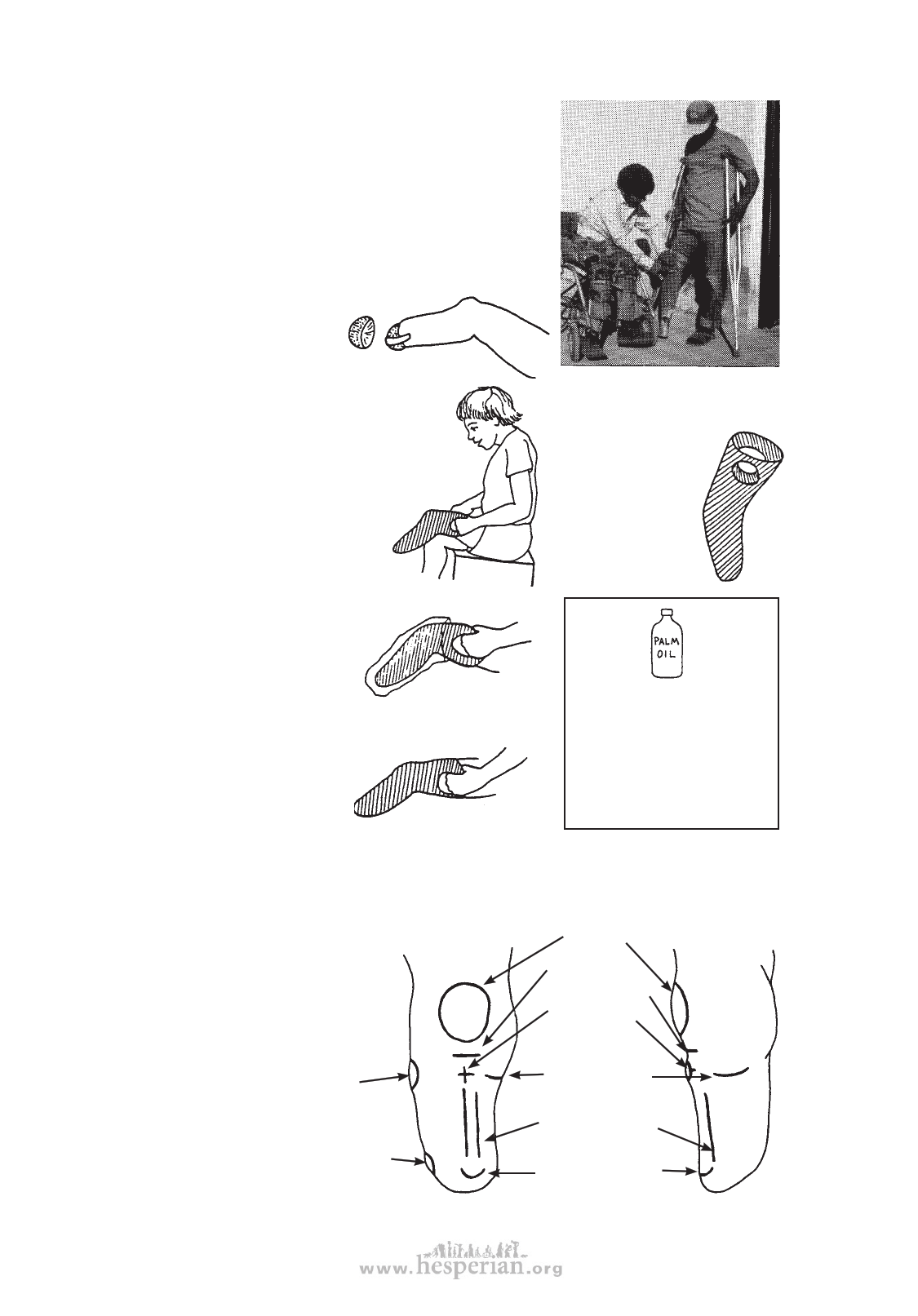
628 chapter 67
PLASTER AND BAMBOO BELOW-KNEE ARTIFICIAL LEG
This simple, low-cost leg was developed for refugee
amputees in Thailand by Operation Handicap
Internationale. It is most useful as a temporary limb for
learning to walk. However, if the inner (plaster) part of
the socket is made with waterproof glue, or is protected
from getting wet, the leg can last for a long time.
Steps for making the plaster socket
1. Make a thick ‘cup’ or ‘cap’
of sponge or folded cloth
and tape it over the end of
the stump (to give it a little
extra length).
2. Put a thick, tight-fitting
stocking—without seams if
possible—over the stump
and knee. (Several thin
layers of stocking can be
used instead of a thick one.)
3. Put a thin plastic bag over the
stocking.
Pull tight
to avoid
wrinkles.
A village rehabilitation worker
fits a young man with a bamboo
limb. (PROJIMO)
Putting holes near
the top of the
stocking makes it
easy for the child
to pull it up tight
against the skin
while the cast is
put on.
4. Put a thin cotton stocking or
stockinette over the plastic
bag and also pull tight to
avoid wrinkles.
5. With the stocking stretched
tight, mark the important
places with a ‘grease
pencil’. The pencil marks
will ‘print’ onto the inside of
the plaster cast when it is
removed.
top of
smaller
leg bone
bottom end
of smaller
leg bone
Note: If you do not have a
stocking, you can mold the
socket directly on the stump.
Shave any hair off the stump
and cover it with vegetable
oil (for example, coconut or
palm oil).
FRONT
VIEW
Mark all these places:
kneecap
middle of
kneecap tendon
bump of shin
bone where
tendon attaches
spot where shin
bone gets wider
SIDE
VIEW
front edge of shin
bone (each side)
bottom end of shin
bone, front edge
Disabled village Children